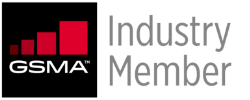Working Late: How Manual Processes Can Hurt Your Productivity
by Temidayo Afolabi

Your journey into working late starts the minute you decide to stay past your scheduled work hours while everyone else leaves to rest and recharge to get a better head start for the next day.
In the past, staying late to work was a sign of commitment and dedication. It meant you had more on your desk than your normal work hours could fit in, but spending more time than usual at work could negatively impact the performance and quality of your work.
Now, this isn’t a stamp of approval to organise a workplace uprising. It is a much-needed reminder to perform work tasks better and more efficiently so you finish early without the underlying pressure of incomplete tasks.
The duties of most employees in occupational health services involve a lot of paperwork – signing off documents, scheduling appointments, meeting deadlines, going through questionnaires, filing reports, and supervising health surveillance. However, sticking to manual ways of doing these can be the reason you finish last at the office.
This is how manual work processes are slowing down your productivity and harming your efficiency:
Manual Processes Require More Time And Effort
Manual processes take time away from other important tasks. In fact, over 40% of employees feel burdened by spending at least a quarter of their work week on manual, repetitive tasks such as data collection, data entry, and scheduling, which they believe reduce productivity when not automated.
Manual Processes Hinder Innovation And Creativity
People often stick to manual work processes because they get too familiar with the methods and outcomes, and implementing a new approach may seem too strange and difficult. The drawback of this mindset is being left behind while others in similar vocations with way less expertise and experience forge ahead and get better results using technology.
Manual Processes Attract Security Risks
Manual processes such as archiving files physically or even storing data on unending spreadsheets can lead to unintended security breaches and vulnerabilities that put your business at risk of a lawsuit or hefty regulatory fines.
How else can you approach work to record better productivity? What can you do differently as an employee in occupational health services to avoid manual redundancies? Process automation – it is the use of technology to streamline complex business processes for simplicity to increase service quality and delivery or contain costs.
In organisations today, 50% of business leaders are ready to accelerate the digitization of internal work processes. This isn’t just about jumping on the “digital transformation bandwagon”, it’s about achieving greater results with simplicity and ease of work that guarantees job satisfaction amongst employees.
Take advantage of the technology specifically designed for occupational health service providers. Seamfix Care allows you to connect with clients, access health records on the go, and keep tabs on health surveillance without the stress that comes with it. Most importantly, it builds trust among stakeholders within the occupational health ecosystem as digital health credentials (passports, licences, certificates) that cannot be falsified or duplicated can be issued and verified with this technology.
Try Seamfix Care and experience maximum productivity.




